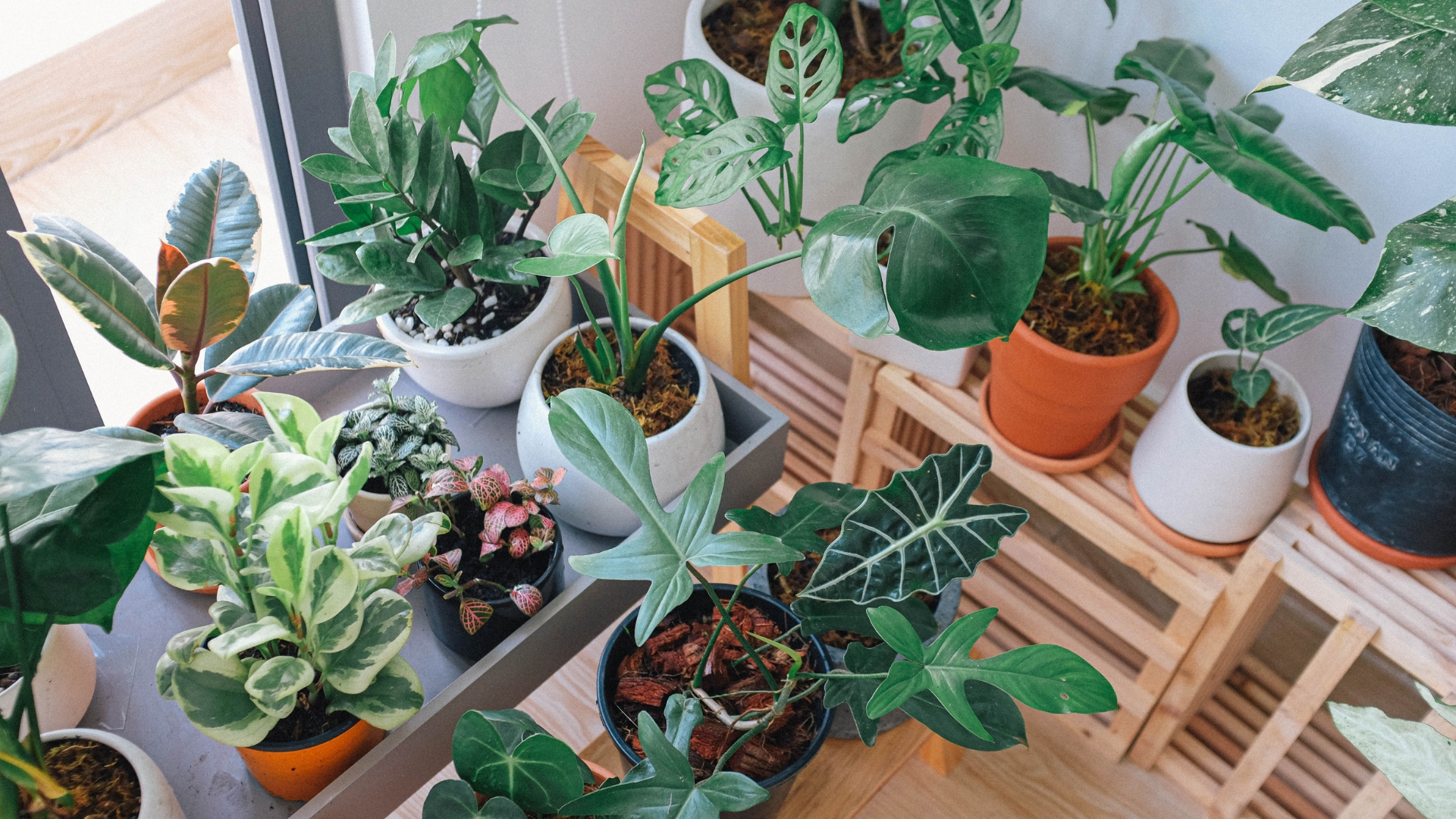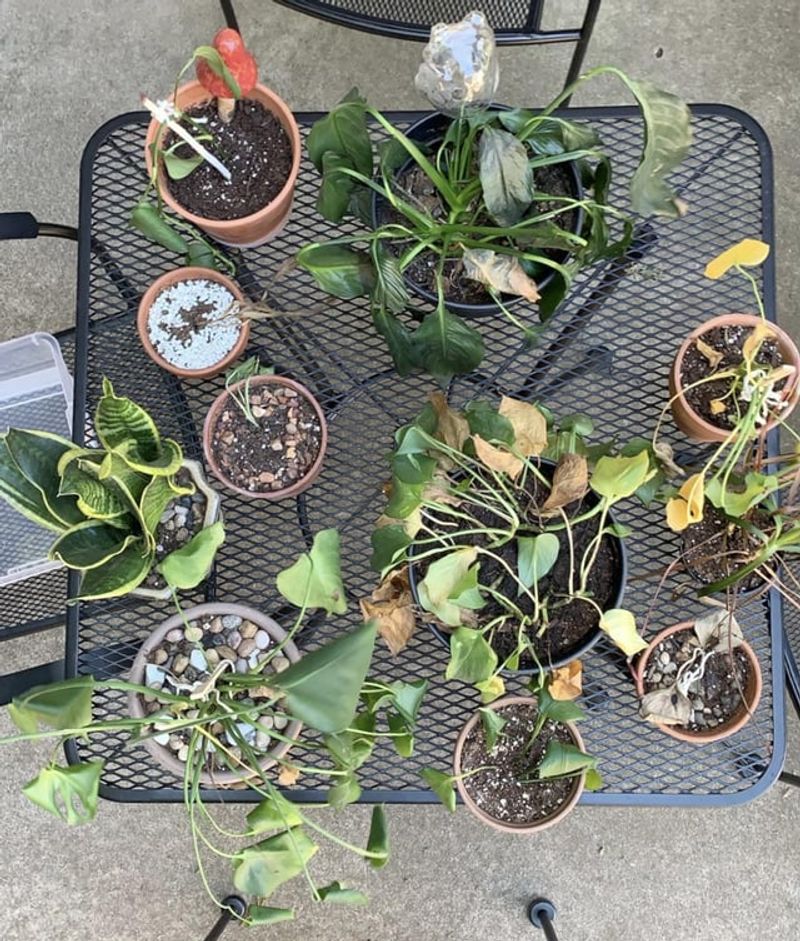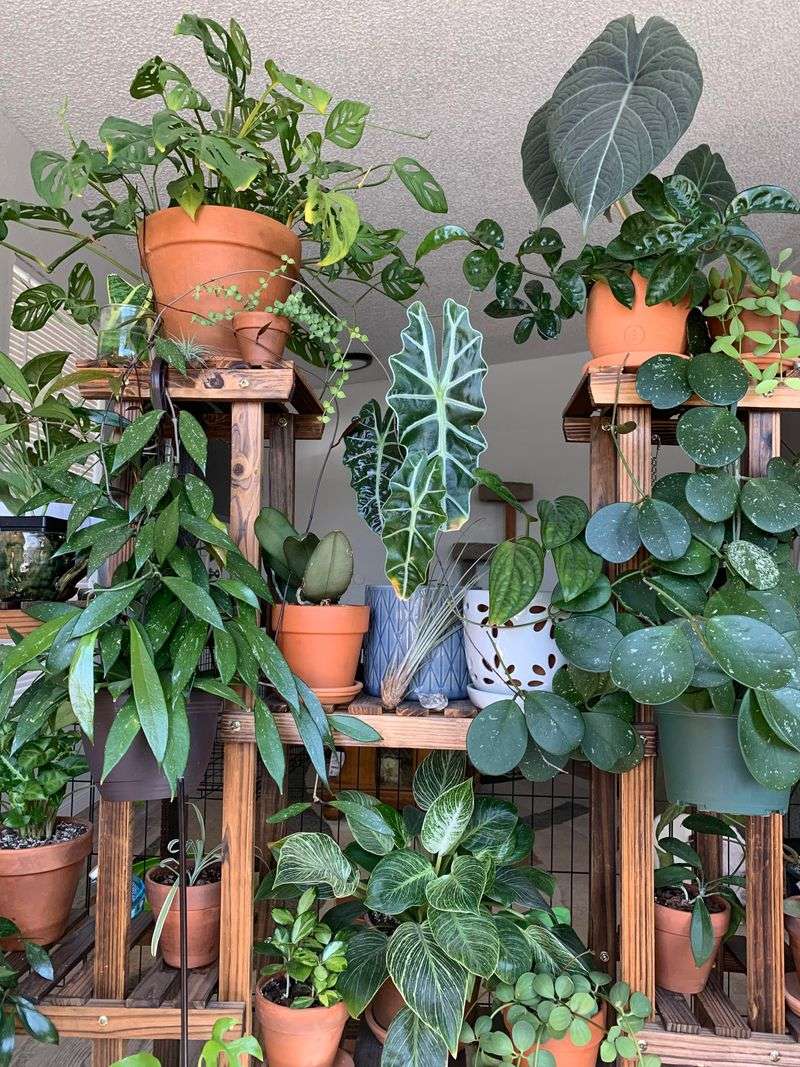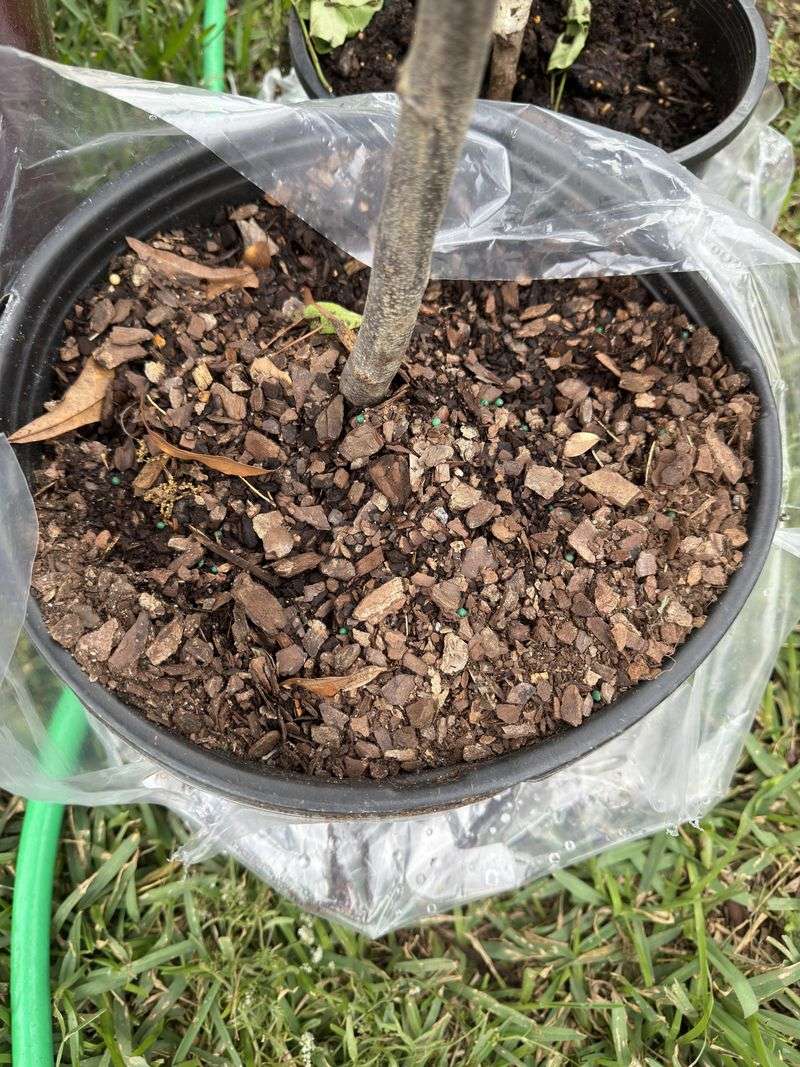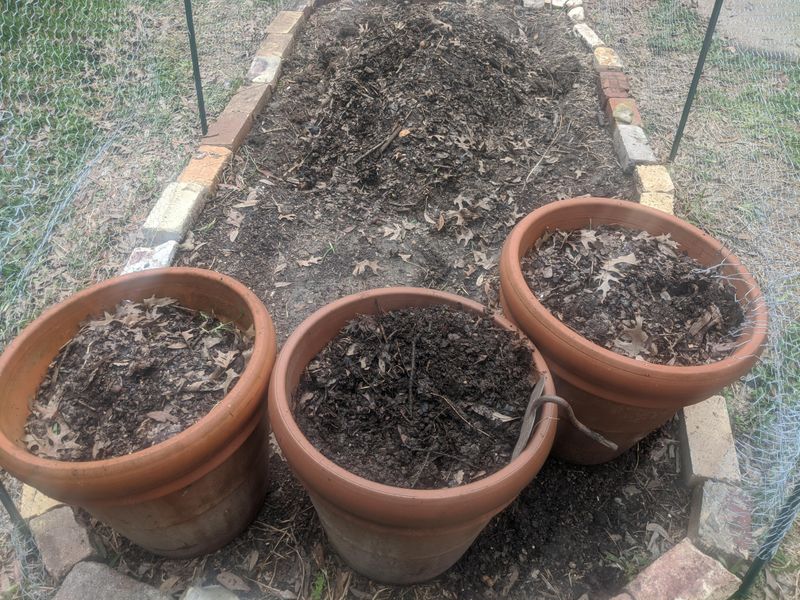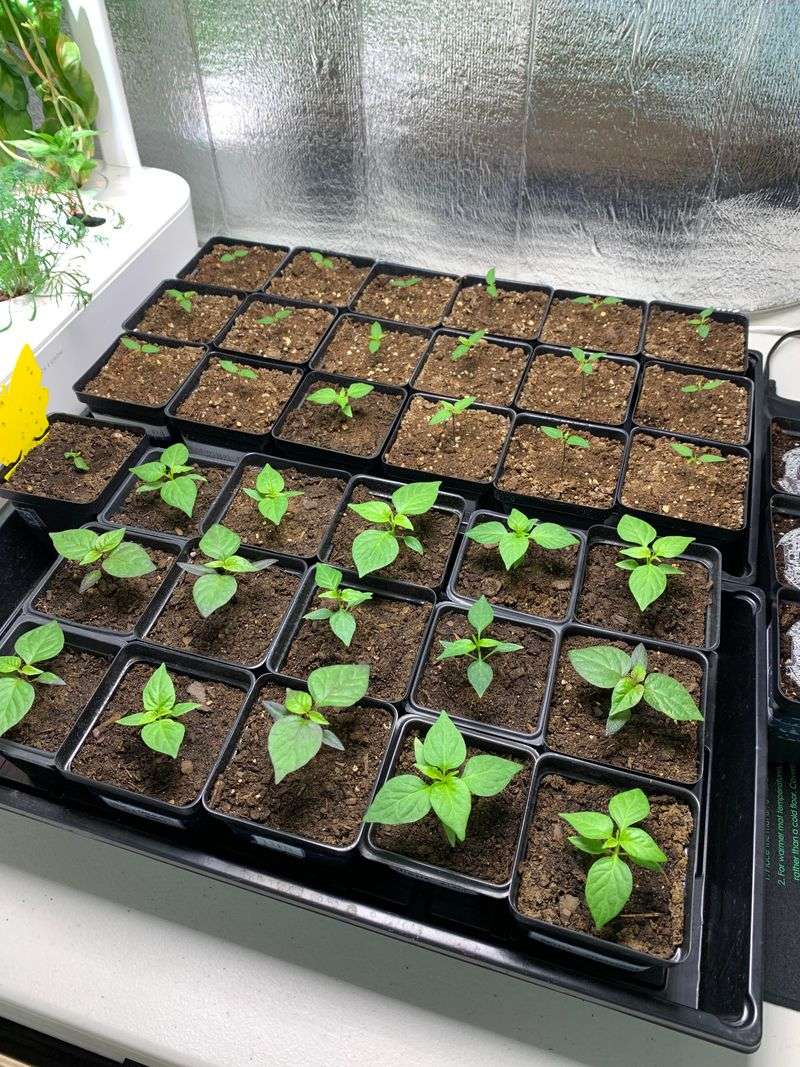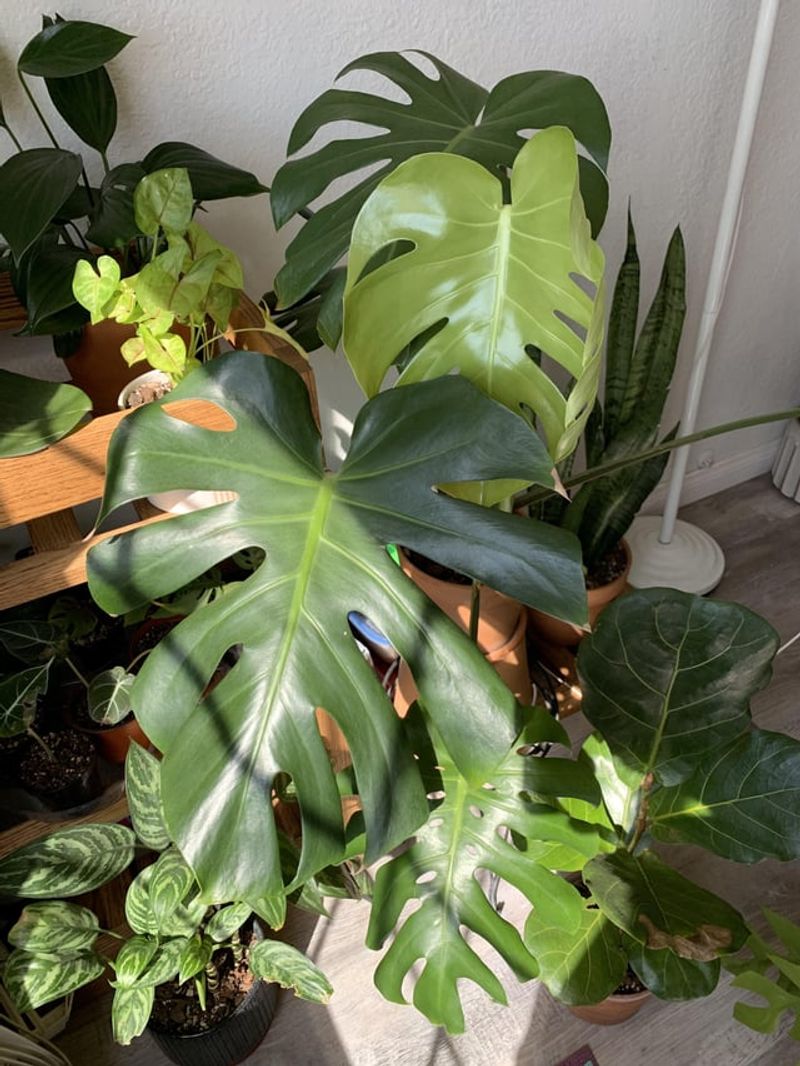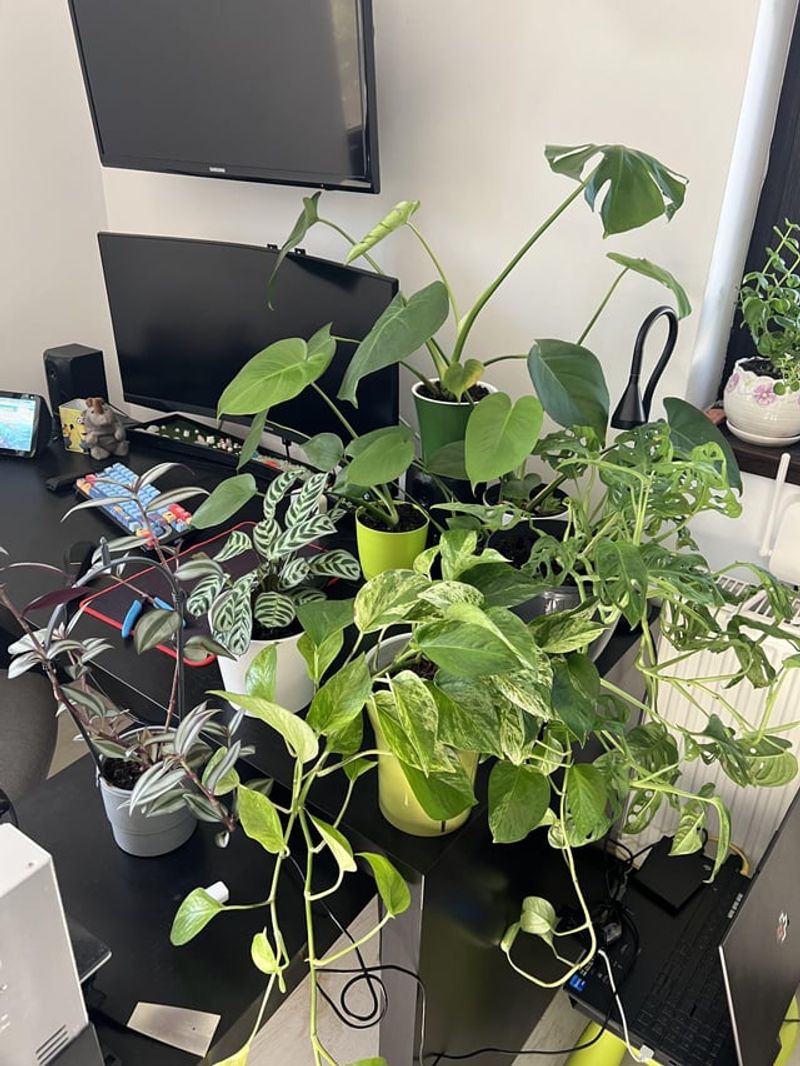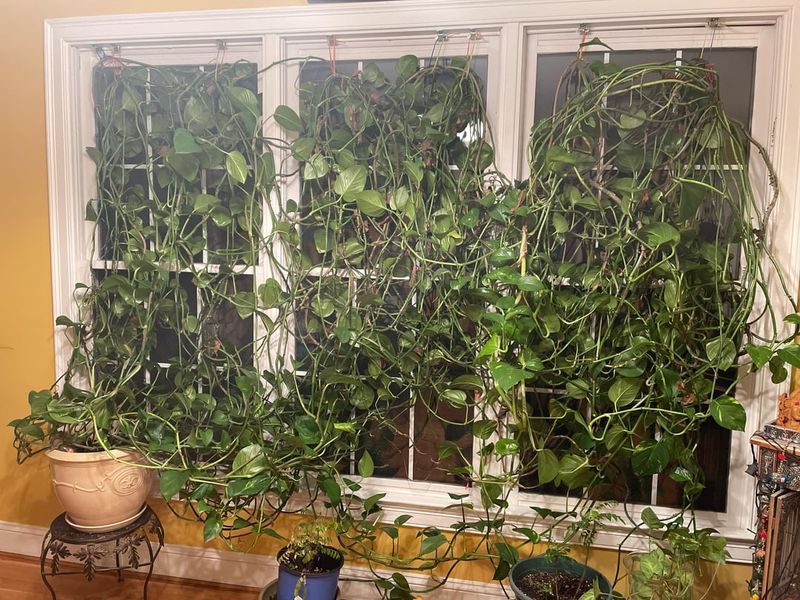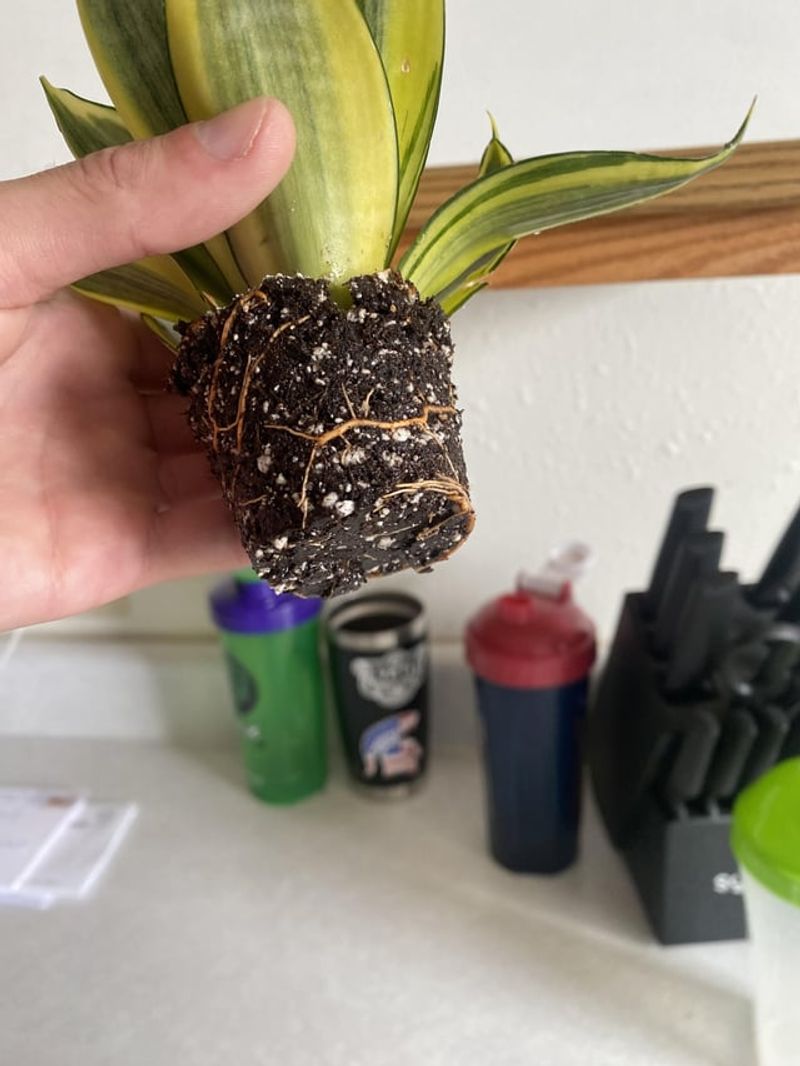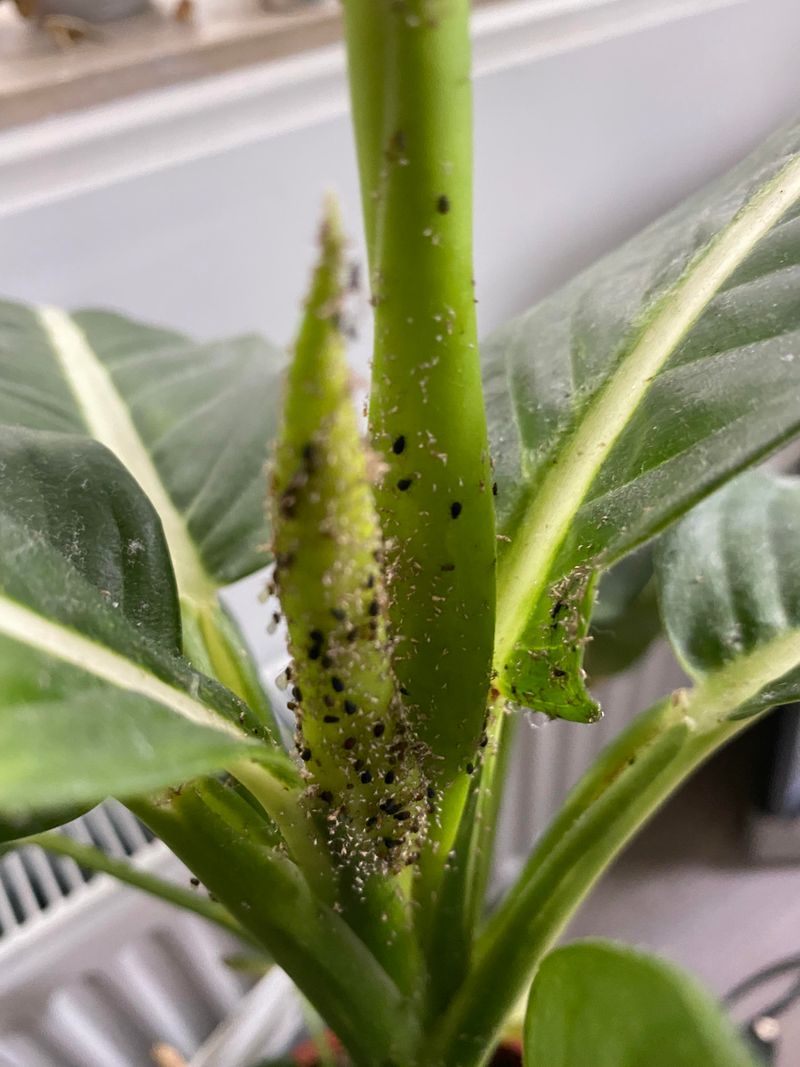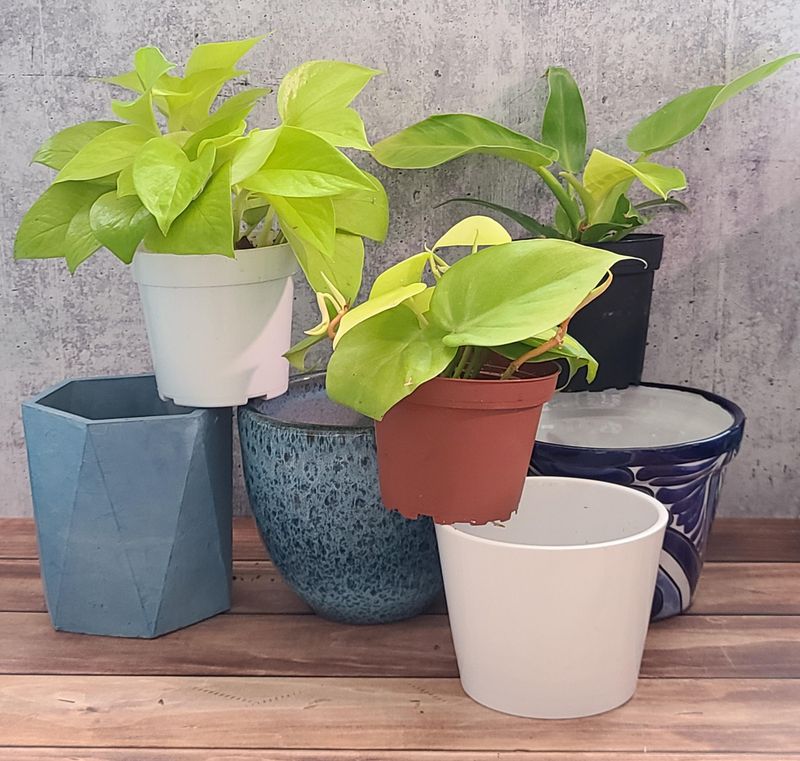I used to be the person who loved plants but couldn’t keep them alive for long. Then I started doing this one simple thing—and suddenly, my plants stopped giving me the silent treatment.
It’s my golden rule, and honestly, it’s made plant care way less stressful and way more fun. I still mess up sometimes, but this trick always brings things back on track.
Want to know my secret? Keep reading to see how this game-changer works!
1. Consistent Watering Routine
Every plant has its own unique hydration needs, much like people with their morning coffee rituals. It’s crucial to establish a consistent watering routine to keep your plants happy. Overwatering is a common mistake and can drown a plant just as sure as thirst can dry it out.
Pay attention to the soil’s moisture level; the top inch should be dry before you reach for the watering can. Remember, it’s easier to revive a thirsty plant than one that’s been overwatered. Regular observation will teach you when your green friend needs a drink.
2. Understanding Light Requirements
Not all plants bask in the sunlight the same way. Some thrive under direct rays, while others flourish in the shade. Knowing your plant’s light needs is like knowing when your favorite show airs; it makes all the difference in the world.
Observe how the light travels through your home during the day and position your plants accordingly. If a plant looks leggy, it might be stretching for more light.
Experiment with different spots until you find the perfect balance, ensuring your green companions get the luminescence they crave.
3. Proper Drainage Is Key
Imagine wearing rain boots without holes on a rainy day—that’s how a plant feels if its pot lacks proper drainage. Waterlogged roots can lead to rot, preventing plants from thriving.
Ensure your pots have drainage holes to allow excess water to escape. This simple step can make a world of difference in your plant’s health.
A layer of rocks at the bottom of the pot can aid in drainage, creating a barrier to keep roots from sitting in water. Keep your plants’ feet dry and happy!
4. Choosing The Right Soil
Choosing the right soil is like picking the perfect pillow; it supports and nurtures. Each plant species has its own soil preference, affecting its growth and vitality.
For instance, succulents prefer gritty, well-draining soil, while ferns thrive in rich, moisture-retentive mixtures. Do a little research on your plant’s origins and mimic its natural habitat as closely as possible.
Avoid the one-size-fits-all approach and give your plants the foundation they need to flourish.
5. Regular Feeding for Growth
Imagine trying to run a marathon on just water—plants need more than just H2O to grow. Regular feeding with the right nutrients is essential for robust growth.
Fertilizers can be a plant’s best friend, providing essential nutrients that the soil might lack. Choose a fertilizer that suits your plant’s specific needs and apply it according to the package instructions.
But remember, more isn’t always better. Over-fertilizing can burn plants, so moderation is key. Feed your plants thoughtfully, and watch them flourish.
6. Temperature Matters
Plants, like people, thrive in environments that suit their temperature preferences. Most houseplants enjoy the comfort of room temperature but can be sensitive to sudden changes.
Avoid placing plants near vents, radiators, or drafty windows where temperature fluctuations are common. If your home feels like a tropical paradise, most plants will be delighted.
Pay attention to seasonal changes, and adjust your plant care routine accordingly to keep your green companions content and thriving all year round.
7. Avoid Overcrowding Plants
Imagine being crammed into a tiny elevator with too many people—uncomfortable and stifling. Plants also need space to breathe and grow.
Avoid overcrowding them by giving each plant enough room to spread its roots and leaves. This helps prevent competition for light and nutrients, leading to healthier growth.
Sometimes, less is more; a few well-placed plants can be more visually appealing than a chaotic jungle.
8. Pruning for Healthy Growth
Pruning is like giving your plant a good haircut—it keeps them looking fresh and encourages new growth. Trim away dead or yellowing leaves to redirect energy to healthier parts of the plant.
Regular pruning prevents plants from becoming leggy or overgrown, maintaining an appealing shape. Use clean, sharp tools to make precise cuts, reducing the risk of disease.
Remember, a well-pruned plant is a happy plant, ready to thrive with renewed vigor and vitality.
9. Repotting at the Right Time
Outgrowing a pot is like wearing shoes that are too small; your plant needs more space as it grows. Repotting is essential to provide room for root expansion and sustained growth.
Keep an eye on the roots—if they start to circle the pot or grow out of drainage holes, it’s time for a new home. Choose a pot slightly larger than the current one to allow for growth but avoid oversized pots.
Repotting not only gives your plant more space but refreshes the soil, providing new nutrients for continued health.
10. Keeping an Eye on Pests
Pests can be a gardener’s nightmare, sneaking in and wreaking havoc on your cherished greens. Keep a watchful eye for any signs of infestation, such as discolored leaves or webbing.
Regularly inspect both sides of leaves and stems, especially during warmer months. Early detection is key to preventing widespread damage.
Natural remedies, like neem oil or insecticidal soap, can be effective against common pests without harming your plants. Vigilance and prompt action will keep your garden pest-free and thriving.
11. Using the Right Containers
Choosing the right container is like selecting the perfect outfit—it should be functional and flattering. Containers come in all shapes and sizes, but not all are suitable for every plant.
Ensure the container has adequate drainage and fits the plant’s size to avoid root crowding. The material matters too; some retain moisture better, while others allow for more evaporation.
Choose a container that complements your home decor while meeting your plant’s needs. A well-chosen container can be both a beautiful and practical addition to your space.
12. Seasonal Care Adjustments
Just as wardrobes change with the seasons, so should plant care routines. Plants may require different amounts of water, light, and nutrients depending on the time of year.
During the growing season, typically spring and summer, plants are more active and may need more frequent watering and feeding. In contrast, during the fall and winter, growth slows, and requirements decrease.
Observe your plants and adjust their care as needed to ensure they prosper year-round. Embrace the changes, and let your plants thrive through every season.
13. Proper Humidity Levels
Dry air can leave plants feeling parched, much like how our skin suffers in winter. Many plants, especially tropical ones, crave humidity for optimal health.
If your home is dry, consider using a humidifier or placing plants together to create a microclimate. Regular misting can also help, but be cautious not to encourage mold.
Monitor humidity levels and ensure your plants are comfortable. With the right environment, your plants will reward you with lush, vibrant growth.
14. Choosing the Right Plant for the Space
Selecting a plant is like choosing a roommate—they need to fit the space and vibe. Consider the light, temperature, and humidity of the location before making a choice.
Some plants thrive in low-light areas, while others need full sun. Additionally, the size and growth habits should match the available space to avoid future relocation.
Research and thoughtful selection ensure your plant will be a happy addition to its new environment, complementing your lifestyle and space beautifully.
15. Understanding Plant Signs
Plants communicate in their own silent ways, showing signs when something’s amiss. Yellowing leaves, wilting, or brown tips can indicate issues with water, light, or nutrients.
Developing an eye for these signs allows you to address problems early, preventing long-term damage. Like a doctor diagnosing a patient, understanding plant signals leads to effective care.
Regular checks and prompt responses to your plant’s signals will ensure they remain vibrant and healthy. Stay attentive, and your plants will thrive under your watchful care.

